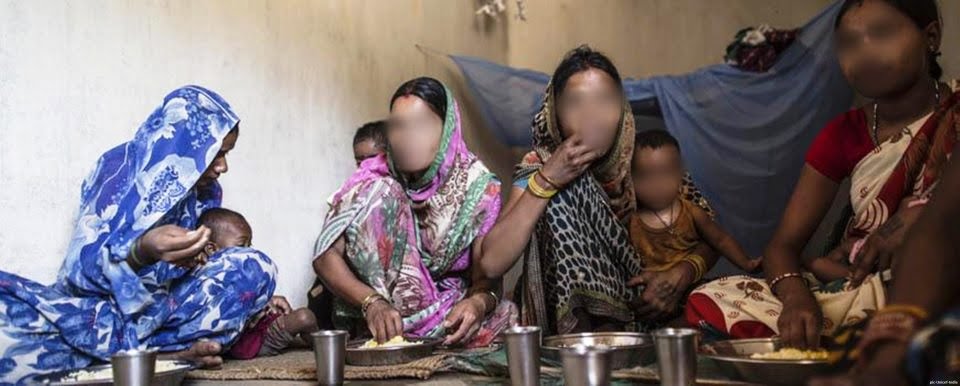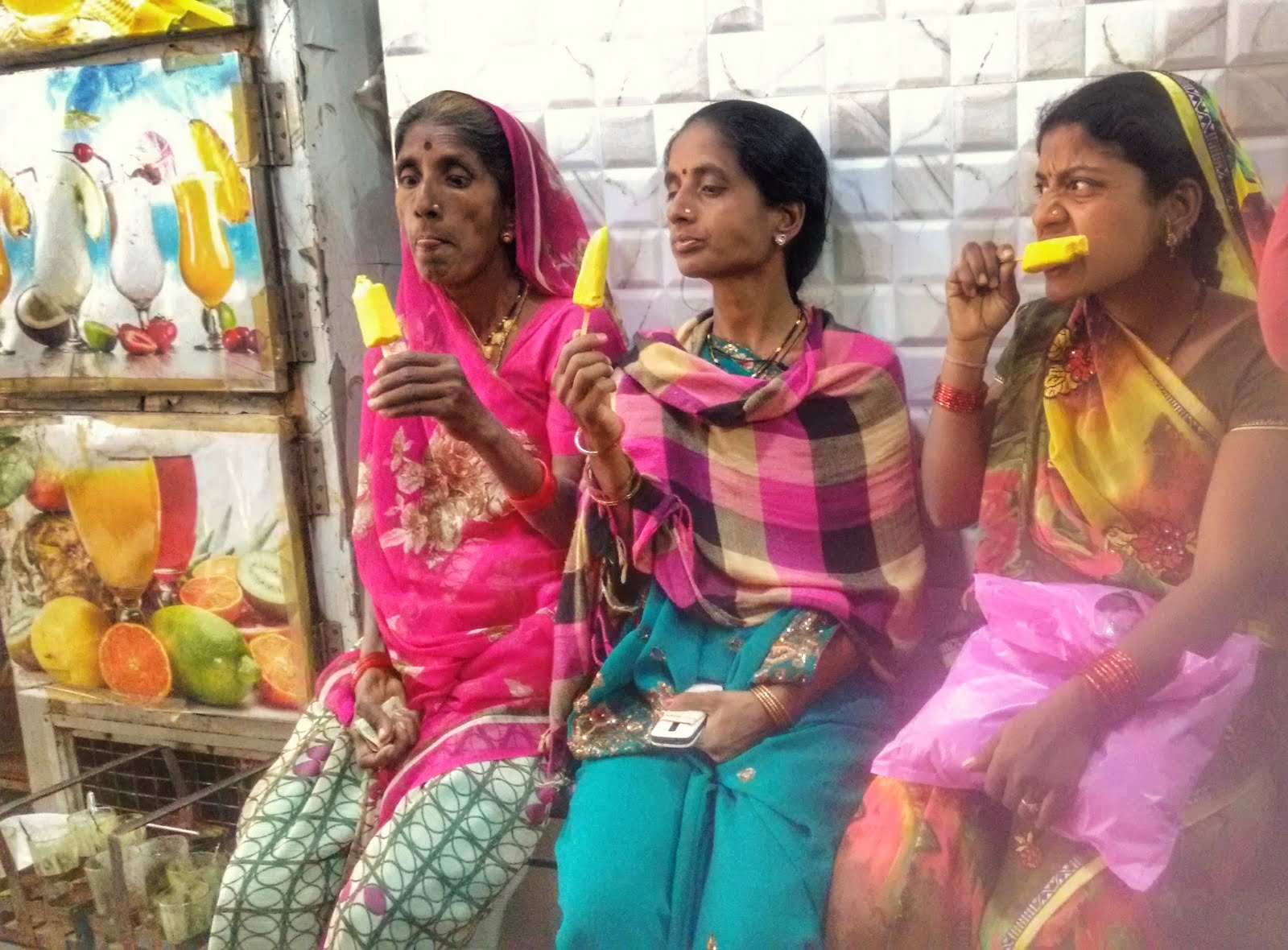When Rima Kallingal, a Malayalam industry actor, started her TED talk by stating how her feminism started with a fish fry, a large section of the immediate response she received were from the faceless internet trolls. Kallingal tells us a story that isn’t unheard of in Indian households. When her mother brought three fried fish to the dining table one day, she thought it was only natural to serve the oldest member of the family, Kallingal’s grandmother, and the two men: father and brother, while a younger Kallingal and her mother would go without.
According to The State Of Food Security and Nutrition in the World 2020 report, about 51.4 percent Indian women in the reproductive age group suffered from anaemia. With India’s rise in malnourishment in the past few years, especially poor women across the country have been affected the most. Increased levels of hunger, poverty and unemployment levels caused by the COVID-19 pandemic has further exacerbated gender inequity. The indicators of the same include the rise in the numbers of girls being forced to drop out of school, child marriages and the fall in nutritional levels of women and girl children as compared to the men in the family, among other factors.
Given how 68 percent of deaths of children less than five years of age is because of malnourishment faced by the mother and child, it becomes important to underline how the act of eating itself is a gendered act manifesting in myriad ways.
In addition to impoverishment due to caste-based oppression, class hierarchy, unemployment, etc. that leads to rationing of resources, women, especially from the marginalised communities, tend to be doubly oppressed when it comes to accessing the food on their tables. The priority has always been to ensure that the men in the family eat first and then the boy child, leaving the women and young girls hungry.

Also read: PCOS And Eating Disorders: The Relationship With Food Is Complicated For Many
In this discourse, the picture of a woman eating heartily; licking the curry off her fingers; biting into a delicacy and savouring it slowly becomes both an act of resistance against state and structural oppression as well as a personal feminist assertion.
In this discourse, the picture of a woman eating heartily; licking the curry off her fingers; biting into a delicacy and savouring it slowly becomes both an act of resistance against state and structural oppression as well as a personal feminist assertion.
Normalising the act of women having to eat whatever is left after the men of the family eat, romanticisation of women eating what remains on their husbands’ plates, have serious implications. Women often eat in quiet frenzy and would rarely get to enjoy meals as an act of leisure. There are times when our mothers would stop us from going in for the chunkier pieces of chicken, because, what? Are we going to serve bones to the men of our family? These are familiar sights from dining tables we have sat across over the years, including ours.
The paper Consuming Performances: Eating Acts and Feminist Embodiment by Marcy J Epstein observes how astonishment over the act of women eating ranges from “mild confession to the unthinkable.” Epstein quotes the examples of comedian Paula Poundstone and supermodel Cindy Crawford, who publicly state their love for Pop tarts and blueberry treats slathered with butter, respectively. While the former’s confession results in fans sending her boxfuls of Pop Tarts, the latter’s revelation is met with disbelief, given how Crawford’s body is assumed to be meant for public consumption and hence, devoid of the autonomy to indulge in treats.
Further, while Epstein reads Poundstone’s act as one of mockery or subversion of the masculine act of ingestion (“she can have all the Pop Tarts she wants”), the response Crawford receives is stemmed in how “the svelte can do such a thing”.
Thus, assertion through expressing the bodily desire towards consumption is also related with body image, that is, for women to have desirable bodies, it is pertinent that they consume less.

Women’s bodies are seen less as those that need nurturing and more as those that nurture.
The paper further observes how in Electra Speaks (1980-81), an acclaimed performance by a feminist theatre group called the Women’s Experiential Theater, for Orestes, his mother’s body is an “object of his consumption”… “the woman’s body becomes object, milk jug, tit”, thus furthering the nurturer-agent argument into a Freudian context. Therefore, a woman’s body is consumed, controlled and objectified essentially in contradiction with her own act of ingestion.
Kallingal too states how it never occurs to her mother that instead of serving food to the family, she too, could sit down at the table to eat with the rest of the family, while they all serve themselves. Thus, women’s act of historically restricting their own ingestion of food is inextricably linked with how they are essentialised as nurturers and caretakers, who’d sacrifice their needs to prioritise that of the others, usually men. In that sense, eating also becomes an act of gender performance, like Judith Butler argues, which then eventually determines your position in the power hierarchy.
Leda Cooks, in the paper You are What You (Don’t) Eat? Food, Identity, and Resistance, dives into the metaphor that looks at the performance of eating. They note that the saying ‘you are what you eat’ is performative in how norms such as ‘ladies do not chew with their mouth open’ accords gender identities to the performers of the act of ingestion.
Also read: How Does The Gendered Practice Of Eating Shape The ‘Female’ Body?
The paper ‘You are What You (Don’t) Eat? Food, Identity, and Resistance’ dives into the metaphor that looks at the performance of eating. They note that the saying ‘you are what you eat’ is performative in how norms such as ‘ladies do not chew with their mouth open’ prescribes gender identities to the performers of the act of ingestion.
Susan Bordo in the paper Unbearable Weight: Feminism, Western Culture and the Body, observed: “… And, for women, associated with the body and largely confined to a life centered on the body (both the beautification of one’s own body and the reproduction, care, and maintenance
of the bodies of others), culture’s grip on the body is a constant, intimate fact of everyday life.” Thus, a woman’s body, in food politics, is subjected to deprivation of nutrition rooted in a cultural imposition.
In what could be a conscious or unconscious subversion of the patriarchal narrative of eating, we see several body positivity activists unabashedly and joyfully eating. In what is a train of stories of their everyday lives that we have now grown accustomed in the voyeuristic act of flipping through, we see these women thriving as they embrace the colours on their plate. Lyla Freechild, activist and period and blue pottery artist based in Jaipur, is one such person.
Talking to feminisminindia.com about her relationship with food, Lyla described how her relationship with food changed as she shifted to a plant-based diet. “When I started to really enjoy and be mindful of the single-grained, gluten-free, oil-free and sucrose-free food I was nourishing my body with, I realised my energy levels increased. I was eating larger portions but my mind and body was fitter than ever,” she said. One will often find her gorging on platefuls of fruits on her Instagram account: an act of carefree indulgence rarely associated with women. However, Lyla, just like any other woman existing in the public and patriarchal dotcom, would get unwarranted messages from men who would make remarks like “You eat so much! There’s so much calorie intake, you will gain weight!”
Natasha Noel is a body positivity activist and yoga trainer with over 300,000 followers on Instagram (that is where all the cool kids are now!) While on good days one will find Noel patiently giving a low-down on the kinds of vibrators she owns, if you are lucky, you will find Noel also unapologetically biting into a burger with the sauces dripping over, with a burp here, a burp there: a playful, unapologetic showcasing of appetite for both sex and food, access to both which has been historically denied to women. In this, the act then also becomes a subversion of the male gaze: women cease to just appear, they act and wield power.
In what seems like an extension of the harems of women into the public, this reclamation of space also plays out when women huddle together in front of chat stands and bite into mouthfuls of golgappas — the same women who’d, back home, often eat last.
The state and civil society groups too have an important role to play in creating an alternative narrative wherein women are eating well. For instance, a Rajasthan Nutrition Project launched in 2015 encouraged women of Banswara village to simply start eating with their families, instead of prioritising the needs of the men.

It was found that after the intervention women with higher levels of autonomy and their children reportedly had enough to eat as opposed to women with lower levels of autonomy.
Featured image source: Women At Leisure/Surabhi Yadav
About the author(s)
Soumya is a Masters graduate in gender from Jamia Millia Islamia & has a PG Diploma in New Media from Asian College Of Journalism. She is learning to unlearn and question patriarchal structures with empathy. She has taken an interest in gardening but has over-watered and killed two plants already. This may or may not be a metaphorical reference to how she deals with life.




